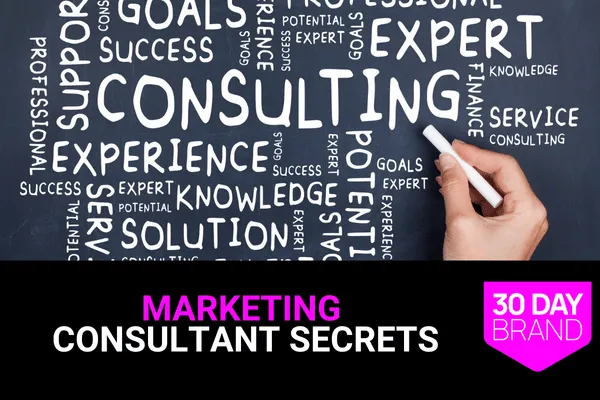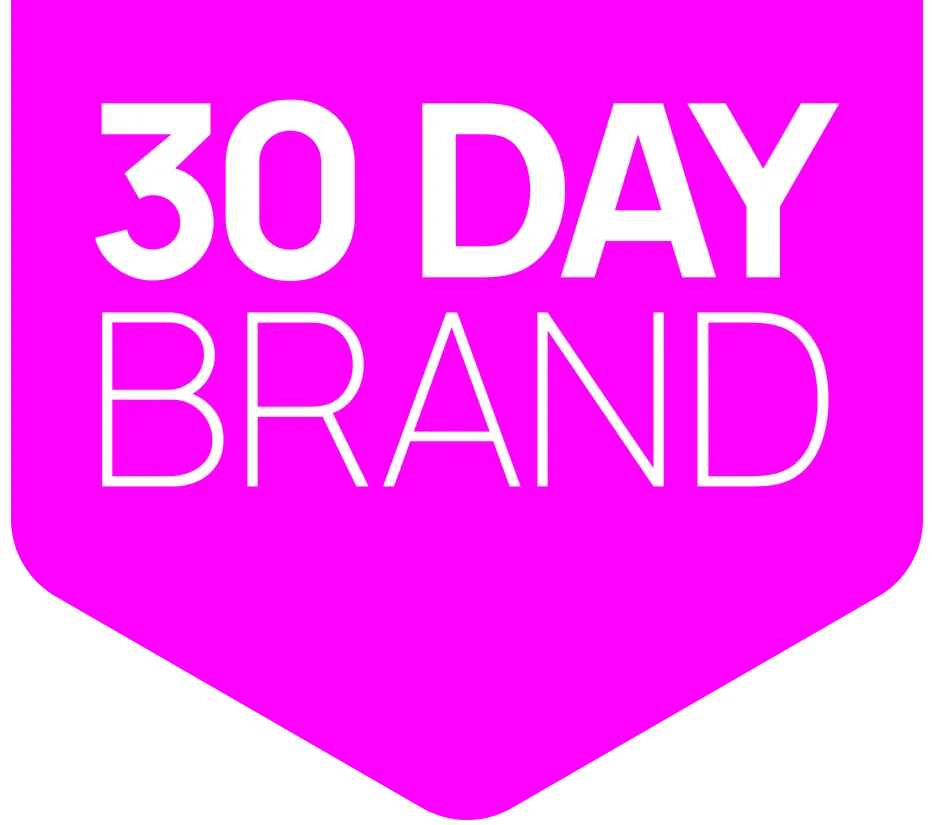
Marketing Consulting for Small Business: Growth Strategies That Work
Why Marketing Consulting Matters for Small Businesses
Most small business owners share the same frustrations: spending on ads without results, posting on social media with little engagement, or struggling to track ROI. Without a clear marketing plan, growth becomes random and stressful.
Marketing consulting for small business provides expert strategy, execution guidance, and systems that help owners turn marketing into predictable growth. It matters because 53% of small businesses say marketing is their biggest growth challenge (HubSpot, 2024).
For founder-led B2B firms, consultants, and service providers, consulting bridges the gap between activity and measurable ROI.
👉 Before hiring a consultant, ensure your business messaging framework is clear. Without sharp positioning, even the best consultant can’t deliver results.
Marketing Consulting Best Practices: 10 Proven Approaches
Many small businesses waste money on marketing that doesn’t scale. Smart consulting creates clarity and growth.
1. Assess Current Marketing Performance
Definition: A marketing audit evaluates website, campaigns, analytics, and spend.
Why it matters: Businesses that audit their marketing see 30% more efficiency (Forrester, 2023).
How to implement:
Analyze traffic and conversions with GA4.
Review website speed, design, and funnel performance.
Audit ad spend vs ROI.
Check CRM data for lead quality.
Tools: Google Analytics 4, SEMrush, HubSpot.
Case study: A local accounting firm assumed Facebook ads were working. A consultant audit showed 80% of spend was wasted on unqualified clicks. Redirecting spend to Google Ads targeting CFOs cut CPL by 40%.
Result: Clear visibility and efficiency.
Time required: 1 week.
👉 Related: website design for consultants.
2. Define Target Market and Personas
Definition: Clarifying ICPs and buyer personas ensures campaigns attract the right prospects.
Why it matters: Companies that define target audiences convert 2.5× higher than those that don’t (Forrester, 2024).
How to implement:
Interview best clients to uncover pain points.
Build personas: demographics, role, pain, budget, triggers.
Use LinkedIn data and CRM to validate.
Segment lists for personalization.
Tools: LinkedIn Sales Navigator, HubSpot Persona Builder, Typeform.
Case study: A boutique consulting firm broadened outreach to “any SMB” and wasted resources. After refining persona to “founder-led professional services with 10–50 staff,” conversions doubled in 90 days.
Result: Sharper targeting, better ROI.
Time required: 1–2 weeks.
👉 Related: Small Business Consulting Marketing
3. Clarify Business Messaging Framework
Definition: A messaging framework ensures every touchpoint communicates what you do, who you serve, and why you’re different.
Why it matters: Brand confusion can cost businesses up to 23% of potential revenue (Lucidpress, 2023).
How to implement:
Define positioning (what problem you solve, for whom).
Create a one-liner pitch.
Align website, ads, and LinkedIn with the same message.
Test clarity with prospects.
Tools: Messaging frameworks like StoryBrand, 30DayBrand Analyzer.
Case study: A coaching firm’s website spoke about “transformation.” After consultant-led rework into “helping executives reduce stress and reclaim 10 hours weekly,” clarity improved, and inbound calls tripled.
Result: Messaging that attracts right-fit clients.
Time required: 1–2 weeks.
👉 Related: brand storytelling guide.
4. Build a 30-Day Marketing Plan
Definition: A short-term roadmap that sets priorities, campaigns, and KPIs.
Why it matters: Businesses with clear strategies are 313% more likely to succeed (CoSchedule, 2023).
How to implement:
Define 1–2 quick-win campaigns (SEO blog series, LinkedIn outreach).
Set KPIs: CPL, SQLs, ROI.
Assign owners for each task.
Review weekly for accountability.
Tools: Trello, Asana, HubSpot dashboards.
Case study: A retail consulting business lacked focus. After a consultant built a 30-day plan, they launched a LinkedIn outreach campaign + Google Ads pilot. Within 30 days, 47 SQLs were added to the pipeline.
Result: Focus, speed, and measurable momentum.
Time required: 1 week.
👉 Related: done-for-you marketing services.
5. Create Scalable Lead Generation Systems
Definition: Systems that consistently attract, nurture, and qualify leads through a repeatable process.
Why it matters: Small businesses with lead systems grow 2.5× faster than those relying only on referrals (McKinsey, 2023).
How to implement:
Combine inbound (SEO, content) and outbound (LinkedIn, email).
Add retargeting to re-engage warm leads.
Automate email nurture sequences.
Track SQLs in a CRM to measure ROI.
Tools: HubSpot, Apollo.io, ActiveCampaign.
Case study: A boutique HR firm relied on networking. A consultant helped build a LinkedIn + email system. Within 6 months, the firm generated 160 SQLs and closed $240k in new contracts.
Result: Predictable lead flow.
Time required: 3–6 weeks to implement.
👉 Related: B2B lead generation companies.
6. Optimize Sales Funnels for Conversion
Definition: A funnel maps the buyer journey from awareness to purchase, ensuring fewer leads drop off.
Why it matters: Companies with optimized funnels see 2× revenue growth (Salesforce, 2024).
How to implement:
Audit funnel stages (traffic → MQL → SQL → Closed).
Add lead magnets at top-of-funnel.
Simplify offers mid-funnel (consult calls, demos).
Add testimonials and guarantees bottom-funnel.
Test and refine with CRO tools.
Tools: ClickFunnels, Unbounce, Hotjar.
Case study: A wellness coach’s funnel had a 1.4% conversion rate. A consultant rebuilt it with a webinar + lead magnet + consultation CTA. Conversions jumped to 4.2% in 60 days.
Result: Higher conversions at every stage.
Time required: 2–4 weeks.
👉 Related: outsourced B2B lead generation.
7. Leverage Content Marketing
Definition: Educational content positions businesses as trusted authorities.
Why it matters: Content marketing generates 3× more leads than outbound at 62% lower cost (CMI, 2023).
How to implement:
Publish weekly blogs targeting buyer pain points.
Create case studies proving ROI.
Repurpose into LinkedIn posts, podcasts, or short videos.
Gate high-value content (guides, worksheets) to capture leads.
Tools: Canva, HubSpot CMS, Jasper AI.
Case study: A financial advisor added a blog + gated retirement checklist. Within 3 months, they captured 212 inbound leads at $7 CPL, compared to $48 CPL from ads.
Result: Lower CPL, better-qualified prospects.
Time required: Ongoing, 4–6 weeks for traction.
👉 Related: content multiplier framework.
8. Use Paid Ads Strategically
Definition: Paid ads accelerate visibility and lead flow when budgets are managed strategically.
Why it matters: Businesses running ads with clear targeting see 30%+ ROI improvements (Forrester, 2023).
How to implement:
Start with intent-based keywords in Google Ads.
Run LinkedIn campaigns targeting ICP roles.
Use retargeting ads to convert warm audiences.
Test creative and copy weekly.
Tools: Google Ads, LinkedIn Ads, Meta Ads.
Case study: A small IT services firm wasted $15k on Facebook ads. A consultant pivoted spend to LinkedIn PPC targeting CIOs. Within 90 days, SQLs increased 42% at a $280 CPL.
Result: Scalable campaigns with measurable ROI.
Time required: 2–3 weeks setup, ongoing optimization.
👉 Related: digital agency marketing models.
9. Track ROI with Analytics Tools
Definition: Measuring performance ensures spend translates into revenue.
Why it matters: Companies tracking ROI are 1.6× more likely to hit revenue goals (HubSpot, 2024).
How to implement:
Install GA4 and link to CRM.
Set up dashboards for CPL, CAC, SQLs, and ROI.
Attribute leads by source (SEO, PPC, LinkedIn).
Review reports weekly with consultant.
Tools: Google Analytics 4, Databox, HubSpot.
Case study: A consulting firm didn’t track CAC. After implementing dashboards, they cut 2 underperforming ad campaigns, saving $22k/year while boosting pipeline by 19%.
👉 Related: Small Business Marketing Consulting Services
Result: Better spend allocation and higher ROI.
Time required: 1–2 weeks.
10. Establish Long-Term Growth Systems
Definition: Systems scale beyond quick wins and create compounding growth.
Why it matters: Long-term systems improve retention and profitability. SMBs with consultants see 2.5× faster growth (McKinsey, 2023).
How to implement:
Build evergreen content libraries.
Document processes for repeatability.
Train staff on CRM + marketing automation.
Establish quarterly strategy reviews.
Tools: HubSpot, Notion, Loom.
Case study: A boutique design firm worked project-to-project. A consultant built a growth system: evergreen blogs, referral incentives, and retargeting ads. Within 12 months, revenue grew 38%.
Result: Compounding ROI and scalable growth.
Time required: 4–8 weeks.
👉 Related: Marketing Consulting Fees (Small Business)
Marketing Consulting Implementation Guide
Step 1: Audit Existing Marketing Assets
Review site, ads, CRM, and content. Tools: SEMrush, GA4.
Result: Identify leaks and gaps.
Step 2: Define Messaging and ICP
Clarify positioning and personas. Tools: Brand Message Analyzer.
Result: Stronger resonance and targeting.
Step 3: Build Strategic Roadmap
Create a 30–90 day plan with campaigns, budgets, and KPIs.
Result: Clear action plan.
Step 4: Execute Campaigns
Launch inbound, outbound, and ads with consultant oversight.
Result: Consistent pipeline growth.
Step 5: Track and Adjust Weekly
Review KPIs, test, and refine.
Result: Continuous optimization and ROI gains.
Metrics & Measurement for Small Business Marketing Consulting
Consulting should produce measurable outcomes. Key benchmarks:
Businesses with clear strategies are 313% more likely to succeed (CoSchedule, 2023).
Companies tracking ROI are 1.6× more likely to hit revenue goals (HubSpot, 2024).
SMBs with consultants grow 2.5× faster (McKinsey, 2023).
Content-led consulting improves lead gen by 67% (CMI, 2023).
Marketing plan execution increases retention by 60% (Salesforce, 2024).
Case study: A local fitness brand brought on a consultant to implement a 30-day plan + email nurture. Within 3 months, revenue grew 21% and churn dropped 18%.
Common Mistakes in Small Business Marketing Consulting
Hiring without clarity – consultants can’t fix weak positioning.
Chasing quick hacks – expecting overnight ROI.
No ICP definition – campaigns target everyone and resonate with no one.
Ignoring analytics – not tracking CAC, LTV, or ROI.
Over-focusing on tactics – running ads without strategy.
Skipping sales alignment – marketing hands over leads sales won’t close.
Not documenting processes – systems collapse when consultant engagement ends.
👉 Related: done-for-you marketing services.
FAQ: Marketing Consulting for Small Business
What does a small business marketing consultant do?
They audit your marketing, define ICPs, build strategies, and guide execution. Many also run campaigns (SEO, ads, funnels) alongside strategy.
How much does small business marketing consulting cost?
Freelancers: $1,500–$3,000/month
Boutique firms: $3,000–$7,500/month
Agencies: $7,500–$15,000/month
Pricing depends on scope, industry, and deliverables.
How fast can a consultant show results?
Quick wins: 30–60 days (audits, funnel fixes).
Growth ROI: 3–6 months (lead gen, SEO).
Long-term scale: 12+ months (systems, retention).
How do I pick the right consultant?
Look for case studies in your industry.
Check frameworks (messaging, funnels).
Confirm reporting and ROI tracking.
Ensure cultural and communication fit.
What industries benefit most from consulting?
Professional services, SaaS, healthcare, finance, and local service providers. Anywhere referrals alone aren’t enough.
Is consulting better than hiring a marketing employee?
Consultant: expertise, frameworks, speed.
Employee: daily execution, longer-term control.
Best results come from hybrid setups—consultant strategy, employee execution.
Can consultants also run campaigns?
Yes. Many consultants offer both advisory + done-for-you execution. Always clarify scope.
How do I measure ROI on consulting?
Track CPL, SQLs, CAC, LTV, and overall pipeline revenue. Tie consultant recommendations directly to results.
What tools do consultants typically use?
HubSpot, GA4, Salesforce, SEMrush, and email automation platforms like ActiveCampaign.
What’s included in a 30-day marketing plan?
Audits, ICP + messaging, 1–2 campaigns launched, and KPIs defined for tracking.
What are common red flags in consultants?
No case studies or references.
Guaranteeing revenue.
Lack of clear process or framework.
Let’s Build Your Growth Plan: Next Steps
Small businesses that treat marketing as random tactics stay stuck. Consulting creates clarity, focus, and measurable growth.
Run your free Brand Message Analyzer to uncover gaps before hiring a consultant.










